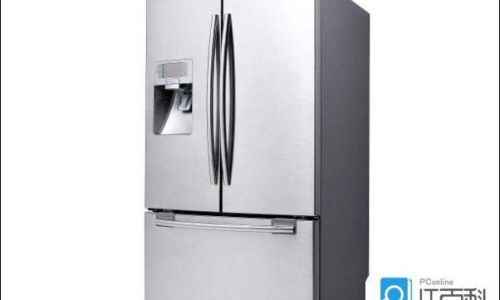Introduction
The question of whether refrigerators are suitable for storing beer has sparked countless debates among beer enthusiasts, homebrewers, and casual drinkers alike. On one hand, refrigeration is widely regarded as the go-to method for preserving perishable goods, including beverages. On the other, some argue that the cold, dry environment of a refrigerator might not be ideal for every type of beer, potentially altering its flavor, carbonation, or overall quality. This article delves into the science, practicality, and cultural nuances of storing beer in refrigerators, exploring factors like temperature, light exposure, humidity, and the specific needs of different beer styles. By examining these elements, we aim to provide a comprehensive answer to whether your refrigerator is truly the best place to keep your brews.
The Science of Beer Storage
To understand where beer belongs, we must first grasp the enemies of beer freshness: heat, light, oxygen, and time. These factors interact in complex ways to degrade beer’s taste, aroma, and carbonation.
- Temperature: Beer is best stored at a consistent, cool temperature. Fluctuations in heat can accelerate staling by increasing the rate of chemical reactions, such as oxidation. Extreme cold, however, can suppress volatile compounds that contribute to a beer’s aroma and flavor.
- Light: Ultraviolet (UV) light from sunlight or fluorescent bulbs can cause a photochemical reaction in beer, breaking down hop oils and creating a skunky off-flavor. This is why most beers are bottled in brown or amber glass, which blocks UV rays.
- Oxygen: Exposure to oxygen leads to oxidation, a process that makes beer taste stale, papery, or even cardboard-like over time.
- Time: All beer has a shelf life, though this varies drastically between styles. Highly hopped IPAs lose their brightness within months, while robust stouts or barleywines may age gracefully for years.
Refrigerators address some of these issues effectively. They maintain a stable, cold temperature and shield beer from light (if stored properly). However, the dry air inside refrigerators and the risk of freezing (if set too low) pose potential drawbacks.
Refrigerators: Pros and Cons
Advantages of Refrigeration

- Temperature Control: Most refrigerators operate between 34–40°F (1–4°C), which is within the recommended range for serving many beers. This cold environment slows down the staling process, preserving carbonation and flavor integrity.
- Light Protection: Storing beer in a refrigerator’s interior (away from the door) keeps it in darkness, preventing skunking.
- Convenience: For immediate consumption, chilled beer is ready to pour, eliminating the need to wait for it to cool.
Disadvantages of Refrigeration
- Dry Environment: Refrigerators circulate dry air, which can desiccate corks in capped bottles (e.g., Belgian ales or wild ales) over time, allowing oxygen to seep in.
- Too Cold for Some Styles: Beers like imperial stouts, barleywines, or lambics benefit from slightly warmer temperatures (50–55°F/10–13°C) to allow their complex flavors and aromas to develop.
- Limited Space: Refrigerators are often crowded with food, limiting storage capacity for beer collections.
- Freezing Risk: If a refrigerator’s temperature dips below freezing, beer can expand, causing cans to burst or bottles to crack.
Beer Styles and Storage Needs
Not all beers are created equal, and their storage requirements reflect this diversity.
- Lagers and Pilsners: These crisp, light beers are often best served cold (38–45°F/3–7°C). Refrigeration aligns with their serving temperature and helps maintain their refreshing qualities.
- IPAs and Pale Ales: Hop-forward beers are prone to flavor fading. While refrigeration slows this process, some enthusiasts argue that very cold temperatures dull hop aromatics. A compromise is storing IPAs at cellar temperatures (50–55°F/10–13°C) until ready to drink, then chilling them briefly.
- Stouts, Porters, and Barleywines: These robust, malty beers often improve with age. Cellaring them at 50–55°F (10–13°C) allows flavors to meld and mellow. Refrigeration is unnecessary unless they’re close to their expiration date.
- Sours and Wild Ales: Many sour beers are bottle-conditioned with live bacteria and yeast. Refrigeration slows this secondary fermentation, which could hinder flavor evolution. However, if the beer is ready to drink, refrigeration preserves its current state.
- Canned Beers: Cans are impervious to light and oxygen, making them ideal for refrigeration. They also chill faster than bottles.
Alternatives to Refrigerator Storage
For those unwilling to dedicate fridge space to beer, alternatives exist:

- Cellars or Basements: Cool, dark, and moderately humid environments (50–55°F/10–13°C) mimic traditional beer cellars. They’re perfect for aging barleywines, stouts, and sours.
- Beer Fridges: Dedicated mini-fridges allow temperature customization and avoid odor absorption from food.
- Cabinets or Closets: If room temperatures are stable (below 70°F/21°C), dark cabinets can suffice for short-term storage.
- Kegerators: For draft beer enthusiasts, kegerators maintain precise temperatures and carbonation levels.
Practical Tips for Refrigerator Storage
If you opt to use your refrigerator for beer, follow these guidelines:
- Avoid the Door: The refrigerator door experiences temperature fluctuations every time it’s opened. Store beer on shelves instead.
- Monitor Humidity: If your fridge is overly dry, consider storing corked bottles in a sealed container with a damp cloth to maintain humidity.
- Rotate Stock: Practice “first in, first out” to ensure older beers are consumed first.
- Adjust Temperature: Set your fridge to the warmest possible setting that still keeps beer cold (around 40°F/4°C) to minimize dryness.
- Separate Strong Odors: Beer can absorb smells from onions, garlic, or cheese. Store it away from pungent foods.
The Environmental Impact
Refrigerators consume significant energy, contributing to carbon footprints. A dedicated beer fridge, running 24/7, adds to this impact. Consider energy-efficient models or unplugging fridges when not in use. For occasional drinkers, storing beer in a cooler with ice packs might be a greener alternative.
Cultural Perspectives
In some cultures, refrigeration is non-negotiable. In the U.S., chilled beer is deeply ingrained in drinking traditions, from backyard BBQs to sports bars. Conversely, in Europe, it’s common to serve lagers and ales at cellar temperatures, arguing that cold numbs the palate. Craft beer movements globally have sparked reevaluations of these norms, with many breweries now providing serving temperature guidelines on their labels.

Expert Opinions
Brewers often have strong opinions on storage. Garrett Oliver, brewmaster at Brooklyn Brewery, advocates for cellaring certain styles: “A great imperial stout is like a red wine—it needs time to breathe and develop.” Meanwhile, Jim Koch, founder of Samuel Adams, emphasizes freshness: “Most beers are best consumed within three months of bottling. Keep them cold and dark.”
Conclusion: To Refrigerate or Not?
The answer hinges on context. For mass-produced lagers, ales, and IPAs intended for immediate consumption, refrigeration is a safe, practical choice. It preserves freshness, blocks light, and ensures a cold, refreshing pour. However, for connoisseurs aging barleywines or nurturing sour beers, a cellar or dedicated fridge offers better control over temperature and humidity.
Ultimately, the “best” storage method aligns with your beer habits. If you drink quickly, diversely, and prefer your brews icy, your refrigerator is a steadfast ally. If you’re a collector or enjoy the nuances of aged beer, explore alternatives. Regardless, the golden rule remains: protect your beer from heat, light, and oxygen. Your taste buds—and your brewer—will thank you.

Final Thought
The refrigerator debate is a microcosm of beer’s cultural and scientific complexity. It underscores a universal truth: beer deserves respect. Whether you chill it, cellar it, or crack it open straight from the case, savor every sip. After all, beer is more than a beverage—it’s a testament to patience, craft, and the simple joy of a cold one (or a perfectly aged treasure).





0 comments